Best Portrait Cameras Under $1,000: Shooting in everyday light
Seven cameras, eight lenses compared, one stood outPage 1: Shooting portraits in everyday light
By Dave Pardue, William Brawley and Dave Etchells
Posted: 06/15/2018
So you have an important event coming up, like a graduation ceremony, and you very much want to come home with great photos of the graduate. Or, perhaps you're heading to a big family function and want a few great shots of your loved ones for a nice holiday card? You know that your smartphone isn't really up to the task, but you're not keen to spend thousands of dollars and haul around something too bulky and heavy in that sort of prime social situation.
...What to do, what to buy!? Don't worry, we've done the hard work for you!
[Not interested in the details? Just cut right to our conclusion!]
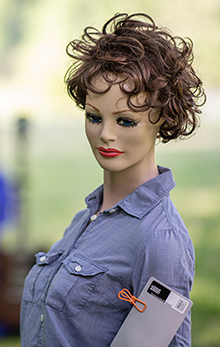
We've gathered together our favorite camera & lens pairings from each major manufacturer and set up several typical lighting scenarios to show how the rigs perform in real-world situations. The best news? Each camera and lens combo totals $1000 or less, and they take really, really good photos! We have a variety of excellent choices to show you that won't break the bank, or your biceps. We'll also provide plenty of additional comparison factors for anyone wanting to explore further.
In addition to our favorite camera and lens selections in this price range, we also wanted to give you a few benchmarks for reference. At the high end, we have one of our all-time favorite portrait-shooting setups: the Nikon D850 (our Best Overall Camera of the Year for 2017) combined with a fantastic portrait lens in the Nikkor 105mm f/1.4. This combo will set you back about $5500, but we wanted you to see how the more affordable kits stacked up against one of the best portrait setups on the market, as a high-end benchmark. We've also included a Sony RX100 V, an an example of a higher-end premium compact camera, also running below $1000, as well as an iPhone 8 Plus, so you can see how well a leading smartphone can handle these shots.
Fur our test subject, we're pleased to bring our favorite model "Gena" back to the scene. The lovely and talented Gena is already famous from our Best Superzoom roundup, and we're introducing two new IR mannequins named "Lois" and "Lisa" as background talent (literally). To simulate a typical outdoor party, we've placed Lois roughly 7 feet behind Gena, and Lisa another 7 feet behind Lois. This will allow us to gauge the subject-to-background isolation potential of each camera/lens combination across a common shot. Note that as the focal lengths naturally change from rig to rig, we've altered our distance to Gena in order to have her roughly the same "height" in the frame. And because the aspect ratio of some cameras differs from others, we have cropped them all to 4:3 in order to allow for more accurate comparisons on the screen.
Now... let's head to the party!
Late afternoon sun and shade
We begin our comparison shooting in a common afternoon setting with plenty of available light, though not harsh sunlight. This is typical of what you might encounter at a graduation party, or perhaps a late-afternoon cocktail event after a wedding. We're shooting mostly in the shade, but there's more than enough light to remain at base ISO. And we're shooting wide open, of course, on all the lenses, plus using a sturdy tripod to ensure consistency from shot to shot. There is some intentional glare from sunlight in the background, which will allow us to better gauge the dynamic range from rig to rig, and sensor to sensor.
We've processed these from RAW files in Lightroom in order to normalize the white balance and then season the images to taste accordingly, in order to show each model in a "best case scenario" for accurate comparisons. It's important to remember that what we're wanting to compare mostly with this article is subject-to-background isolation potential, high ISO prowess at the brightest available aperture and dynamic range. As such, slight differences in saturation, white balance, etc are not as important to note in this comparison. Of course, as is always the case, RAW files are available on each camera's gallery page for you to download if you'd like to do your own RAW-JPEG conversions.
We start each comparison section with the D850, to establish the high-end performance that the affordable cameras are hoping to emulate, and then move alphabetically through 8 primary manufacturer choices. (We had two good lens options available for the Nikon D3400, so we included both as a direct focal length comparison.) We then conclude each section with the iPhone 8+ image. Note that the differences in perspective are due primarily to the different focal lengths and sensor sizes used across the various camera configurations; all the photos were framed to render Gina at roughly the same size in the frame.
Nikon D850 + 105mm f/1.4
Canon SL2 + 50mm f/1.8 STM
Fujifilm X-A5 + 50mm f/2 WR
Nikon D3400 + 50mm f/1.8G
Nikon D3400 + 85mm f/1.8G
Olympus E-M10 III + 45mm f/1.8
Panasonic GX850 + 42.5mm f/1.7
Sony A6000 + FE 85mm f/1.8
Sony RX100 V shot at max tele 70mm eq. f/2.8
Apple iPhone 8 Plus shot at max tele 57mm eq. f/2.8
Closing In
So there's a look at our initial test shots at base ISO. For a better look at side-by-side comparisons of the depth of field and bokeh quality, we've prepared several tables for you below in order to better gauge the differences at 7 feet (Lois) and 14 feet (Lisa).
Take me to Page 2!
• • •
The Best Portrait Camera and Lens Under $1000
Page 1: Shooting portraits in everyday light (here)
Page 2: Turning the lights down!
Page 3: Specialty shooting scenarios
Conclusion: A First Among Equals
Note: The Reader Comment section on these pages is not working at the moment. We're working on it!

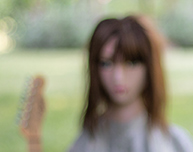
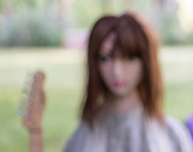
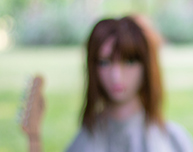
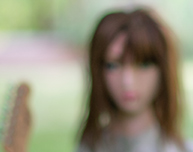
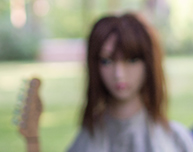
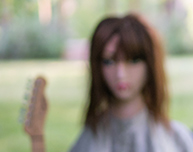
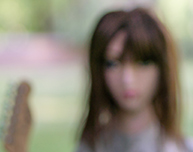
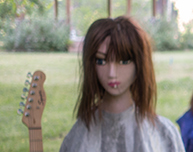
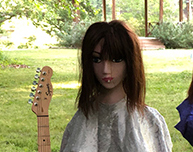

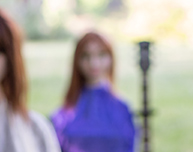


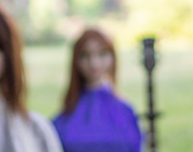
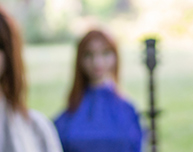
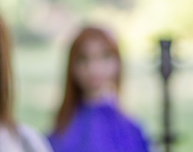

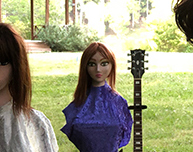

Follow Imaging Resource: